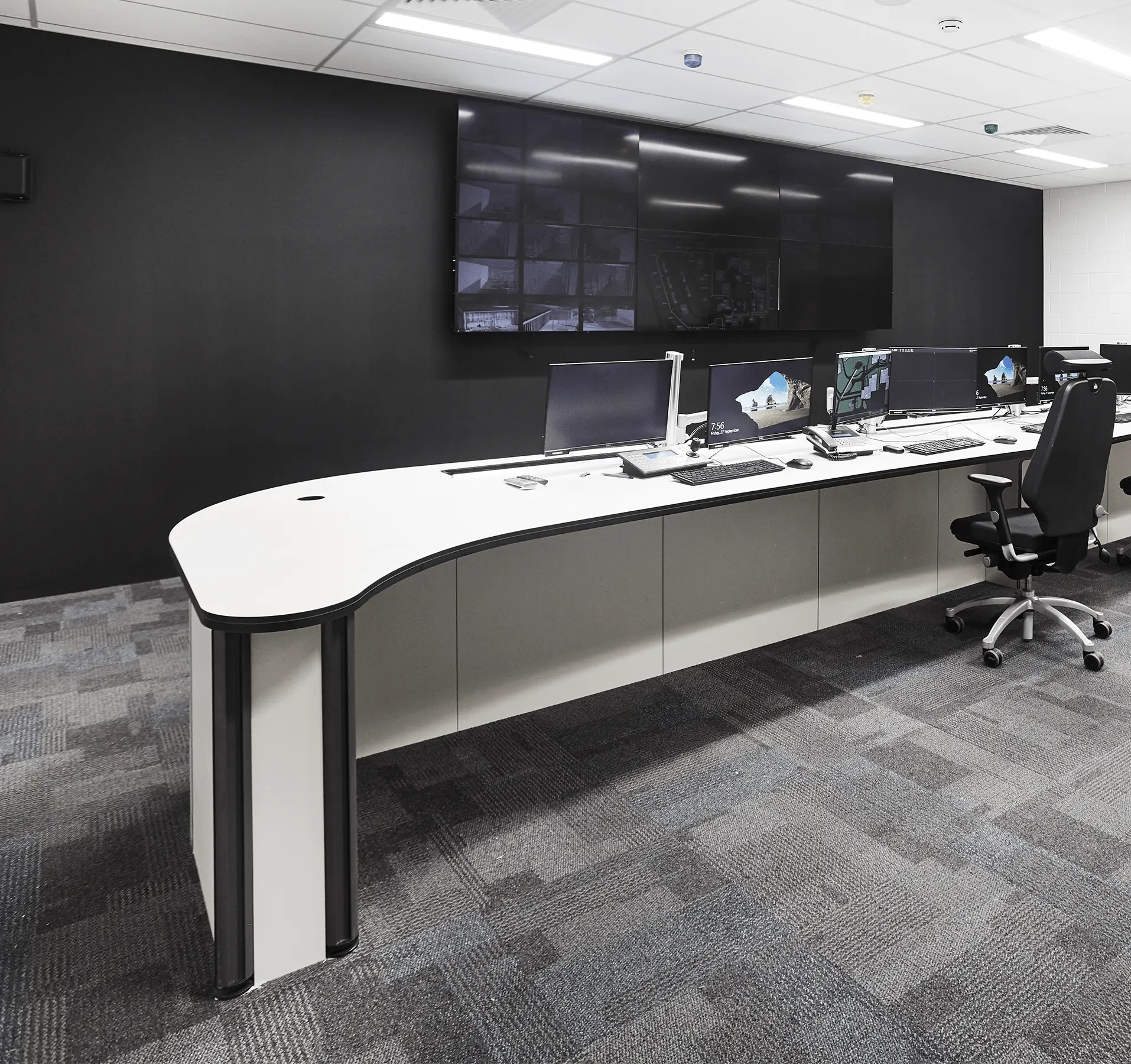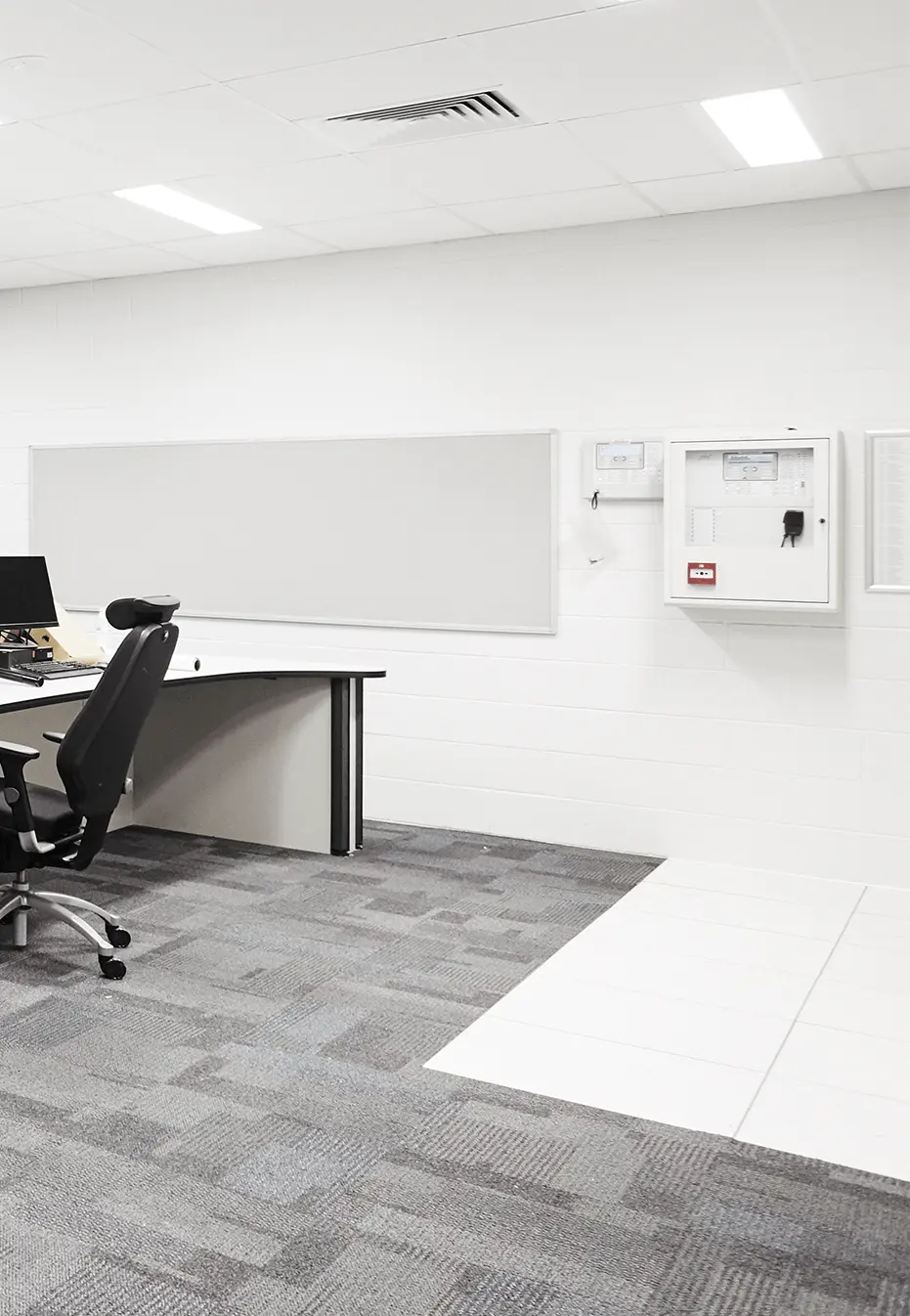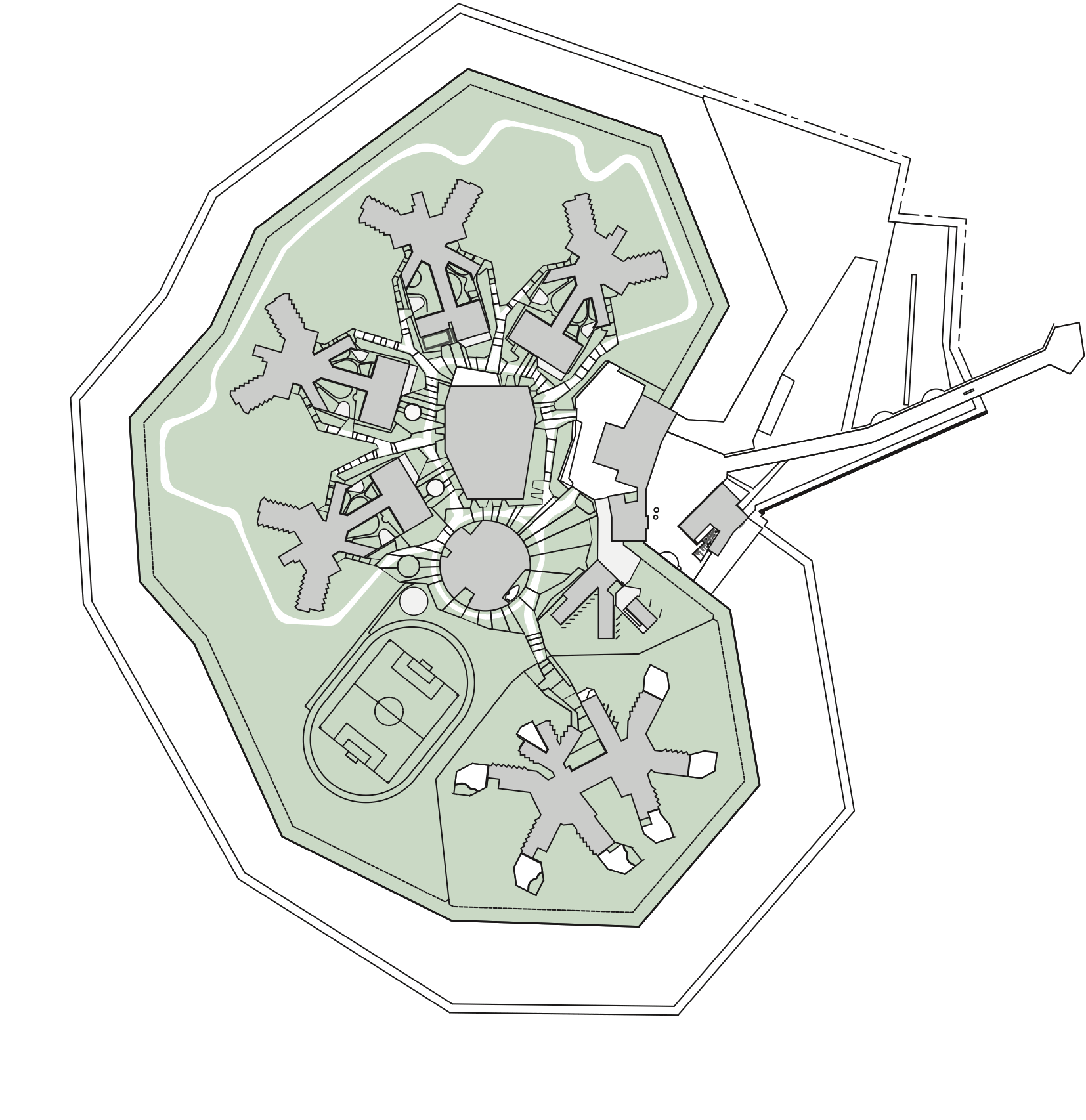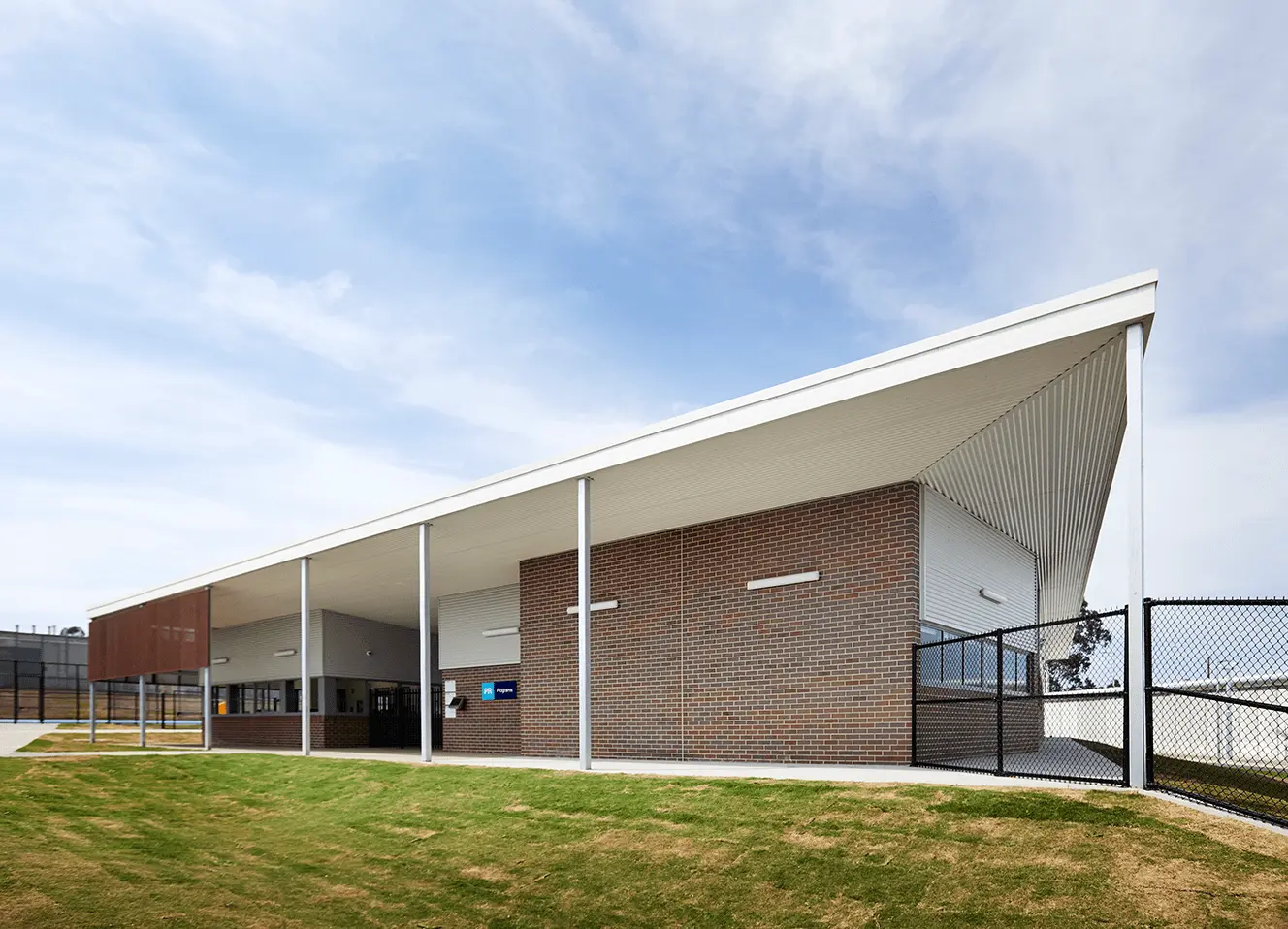











Corella Place
ARCHITECTURE
/
LANDSCAPE
/
INTERIORS
Corella Place
Having previously designed the upgrade and expansion of Ararat Prison (now Hopkins Correctional Centre), Guymer Bailey Architects was pleased to win the tender to design Corella Place, a 40-bed transitional facility next to Ararat Prison, that houses residents in 1, 2, and 3-bed accommodation units.
A significant feature of the design is the central recreation area that provides both passive and active recreation opportunities for residents. A highly flexible administration area was also included to optimise staff comfort and safety. In the design, we also facilitated the need for residents to be kept separate from others, when necessary, while still maintaining a non-punitive environment. Staff interaction is intentional and noticeable, but informal, with only passive supervision needed.
The master planning and building layouts were designed to optimise natural light and embrace natural ventilation. The residential units have hydronic heating and have been constructed with reverse-veneer to create thermal mass. As a result, every unit has received between 6 and 7.2-stars on the First Rate energy efficiency assessments. Water use on the site is also minimised through centralised rainwater collection for toilets, subsurface irrigation from the storm water dam, and electronically controlled shower timers.
Stage A works included the refurbishment and extension of an existing two-storey classroom block as well as the construction of a new covered walkway through the centre of the school.
PROCESS
The project included five cottage style accommodation buildings each consisting of four self-contained 12-bed units. The accomodation buildings are arranged around a central recreation area that provides both passive and active recreation opportunities. The project also included a new gatehouse and visits centre, medical clinic, reception centre and programs building, and an extension of the secure perimeter
METHODOLOGY
Brickwork facades, timber elements, perforated screens and the integration of landscape elements helped to minimise the institutional feel of the facility. The use of repetition and permanent formwork walls instead of traditional masonry or precast concrete, allowed the project to be completed well ahead of schedule.
TRADITIONAL CUSTODIANS OF THE LAND
The Djabwurung People
COMPLETION
2010
LOCATION
Ararat, Victoria
CLIENT
Department of Justice and Regulation - Victoria
PROJECT CONTACT
PHOTOGRAPHY
Digital Photography Inhouse Pty Ltd
VALUE OUTCOMES
“GB-A were an absolute pleasure to work with. The team on site and in the office never cut corners and were committed to delivering a very high quality project.”
Jim Spainard, Golburn Enterprise


Designing for a sustainable future is a core part of our organisational philosophy. Drawing on the knowledge from our Greenstar accredited team members and specialist consultants in environmentally sustainable design, we ensure our project teams integrate creativity with scientific rigour, to create designs that are conscientious of the natural environment and local ecology. Designing for a sustainable future is a core part of our organisational philosophy.
PRINCIPLES OF PASSION
During the design process, our project team not only considers the physical context of the designs but also examines the social and cultural context. Through every design, we look for ways to inspire positive attitudes, behaviours and emotional responses in people to encourage the responsible use of resources, increase cooperation among occupants, and communicate the values of society and cultural diversity.
Designing for a sustainable future is a core part of our organisational philosophy. Drawing on the knowledge from our Greenstar accredited team members and specialist consultants in environmentally sustainable design, we ensure our project teams integrate creativity with scientific rigour, to create designs that are conscientious of the natural environment and local ecology.


We design built environments from a holistic, sustainable perspective: each project reconciles ecological and social impacts within the current economic climate. We holistically evaluate environmental, cultural and financial sustainability in every task we undertake.
